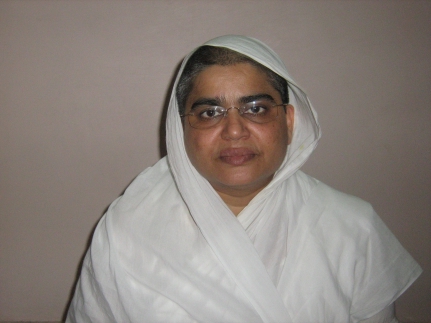
Samani Nidesika Bhavit Pragya while addressing audience in Raipur, Chhattisgarh said that Anasana means fasting unto death. It is the Jain art of dying. This is known as Santhara as well as Samadhi-marana. In Jain tradition it is given more importance. To live is an art and to die is also a great art. If death occurs amidst auspicious and holy thoughts, it is a holy death. It also improves qualities of soul. So Anasana is regarded as an auspicious and spiritual performance. It is equally important for ascetics as well as lay followers.
Soul and body is absolutely different. Soul is immortal and body is mortal. Soul is sentient, body is non-sentient. Soul is formless, body has a form because it has color, taste, smell, and touch. That is why according to the transcendental viewpoint soul and body are different.
The main purpose of the life of a wise person who is well versed with spiritual knowledge, is to realize the self. He also tries to transcend the cyclic path of births and deaths because the worldly souls are bound by karmas. They go on doing karmas continuously and experience the fruits and results of their actions. Through Anasana suffering is to be avoided and eternal happiness is to be achieved. This is the main basis and theme of Anasana.
Before undertaking Anasana, it is required to adopt Samlekhana. Samlekhana consists of two words, Sam and Lekhana. Sam means in the right way, and Lekhana means to reduce diet as well as passions.
There are two types of Samlekhana.
Dravya Samlekhana
Reduction of food for physical attrition which lasts for twelve years, minimum period is six months. In this period, the practitioner does various kinds of penance for physical attrition.
Bhava Samlekhana
Reduction of passions such as anger, pride, deceit, greed, etc. The thinning of the passion and the reduction of diet have propounded as twofold austerity. The mere reduction of diet without thinning the passion, cannot achieve the end. In a nutshell, Samlekhana is a tradition of a typical systematic fasting. After completing the full course of Samlekhna he tries to adopt Anasana. There are three types of Anasana.
Bhakta Pratykhyana:
Fasting unto death. He also tries to give up water gradually. In this penance, the practitioner can move in a restricted area in accordance with the rules of watchfulness.
Inigini Marana:
In this type of Anasana, the moment is further restricted to the place he occupies. All the kinds of food and water are given up. The practitioner abstains from taking any service from anybody.
Padopgaman:
In this Anasana, the position of observer is without any movement like a fallen tree. If he accepts Anasana in a lying down posture, he must be lying down until death. If he accepts Anasana in sitting down posture, he must remain sitting until death. If he accepts Anasana in a standing up posture, he must be standing until death. It is a superior and ideal mode of dying.
Fasting unto death, fasting with restricted movement, fasting without any movement, all are beneficial for well-being of soul. The acceptance of any one of these is also useful.
Before undertaking Anasana, one must seek permission from the spiritual Guru, and ask for forgiveness from all family members and friends that he may have hurt in the past. The Guru does not allow a person to undertake Anasana who suffers from mental abnormalities, lacks of the instinct of self preservation and financial or worldly liabilities due to miserable poverty. The permission is given to disciple very deliberately.
During Anasana the person tries to practice equanimity in all circumstances whether someone cuts by axe or smears by sandal paste. He does not keep any kind of desire for material gains. Anasana is not taken with a desire for material gains in the next life. He never thinks that I shall be such and such person in the next life. If he does, he loses great benefit from Anasana.
In Anasana gods make appearance. Some god may invite him for heavenly pleasures. Such invitation may be made to test him or for swerving him. But the practitioner lives determined in his purpose. His main goal is only to disassociate karmas from the soul.
Anasana means voluntary vow to fast until death. It is accepted with a view of shedding karma and purifying the soul. Suicide is done due to strong and uncontrolled impure feelings such as, attachment, hatred, greed, depression, frustration, negativeness, and compulsion, etc. The Anasana is adopted with calmness of mind and tranquility. Suicide is done violently and often secretly by means of cutting, hanging, or poisoning. The aim of Anasana is to purify soul and the aim of suicide is to end the life.
 Ritu S. Jain
Ritu S. Jain